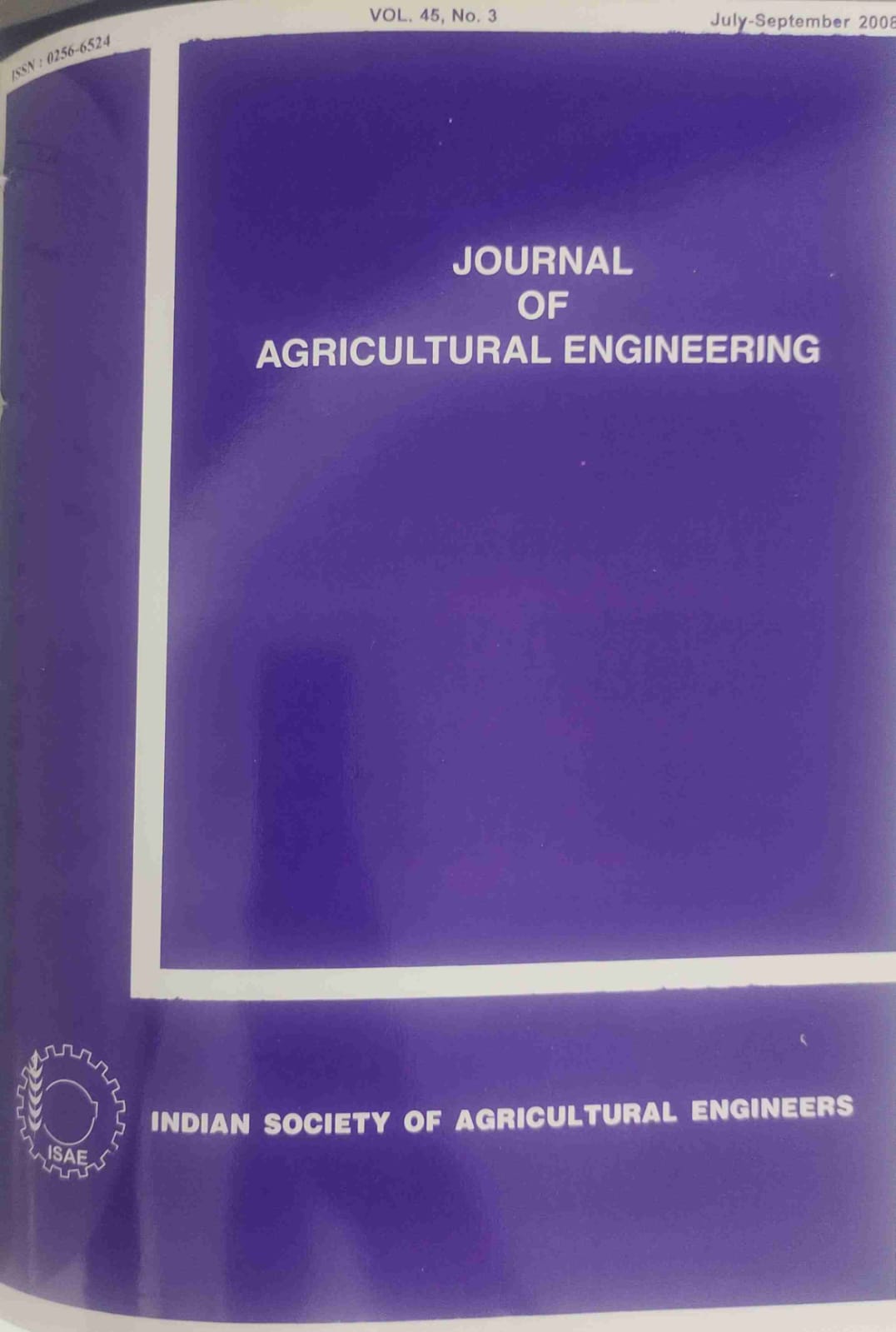Optimization of Energy Inputs for Wheat Cultivation in Punjab Using Data Envelopment Analysis Technique
DOI:
https://doi.org/10.52151/jae2008453.1333Abstract
Production function is used for optimizing purposes. Such functions are established by parametric or non-parametric approaches. In this study non-parametric method i.e. Data Envelopment Analysis (DEA) has been used to optimize the applied energy in wheat production system in Punjab. Two basic DEA models i.e. input-oriented CCR (Charnes, Cooper and Rhodes) and BCC (Banker, Charnes and Cooper) models were subjected on operation-wise and sourcewise energy inputs. BCC model could classify the inefficient farmers to different categories of returns-to-scale (RTS), namely, increasing, decreasing and constant. Results revealed that the yield was mostly dependent upon tillage, irrigation and sowing, respectively, with the mean share of 23, 21.6 and 17.4% for CCR efficient farmers and 26.4, 19.2 and 18% for BCC efficient farmers in all zones. Also the yield was sensitive to human, diesel and seed energy sources with mean shares of32, 18 and 18.6% for CCR efficient farmers and 37, 23.6 and 12.4% for BCC, respectively. Weeding and fertilizer application used energy in excess by 46% and 31.3% for CCR inefficient farmers and by 34% and 29% for BCC, respectively. Electricity and machinery possessed the highest use among all energy sources. It was 43.8% and 21.7 % for CCR inefficient farmers and 33.6% and 15.5% for BCC ones, respectively. Trend of excessive use of energy was the same for both the models
References
Bhushan S. 2005. Total factor productivity growth of wheat in India: A Malmquist approach. Indian J. Agric. Econ., 60(1), 32-48.
Chauhan N S; Mohapatra P K J; Pandey K P. 2006. Improving energy productivity in paddy production through benchmarking: An application of data envelopment analysis. Energy Conversion and Mgt., 47, 1063-1085.
Cooper W W; Seiford L M; Tone K. 2004. Data Envelopment Analysis: A Comprehensive Text with Models, Applications, References and DEA-Solver Software. Kluwer Academic Publishers, Massachusetts, USA.
Fraser I; Cordina D. 1999. An application of data envelopment analysis to irrigated dairy farm in Northern Victoria. Australia. Agric. Systems, 59, 267-282.
Galanopoulos K; Aggelopoulos S; Kamenidou I; Mattas K. 2006. Assessing the effect of managerial and production practices on the efficiency of commercial pig farming. Agric. Systems, 88, 125-141.
Gujarati D N. 1995. Basic econometrics. McGraw Hill Book Company, USA.
Jebaraj A; Iniyan S. 2006. A review of energy models. 11JAB: 45(3) Renewable and Sustainable Energy Rev., 10, 281-311.
Johanes J. 2006. Data envelopment analysis and its application to the measurement of efficiency in higher education. Economics of Education Rev., 25, 273-288.
Sarker D; De S. 2004. High technical efficiency of farms in two different agricultural lands: A study under deterministic production frontier approach. Indian J. Agric. Econ., 59(2), 197-208.
Singh G 2001. Optimization of energy inputs for crop production in Punjab. Unpublished Ph.D. dissertation. Punjab Agricultural University, Ludhiana, India.
Singh G; Singh S; Singh J. 2004. Optimization of energy inputs for wheat crop in Punjab. Energy Conversion Mgt., 45, 453-465.
Singh Surendra; Pannu C J S; Singh Sarjinder; Singh I P; Kaur Surinderjit. 1996. Energy in Punjab Agriculture. Department of Farm Power & Machinery, P.A.U., Ludhiana.
Singh S; Singh S; Pannu C J S; Mittal J P. 1998. Preharvest energy use and crop yield relationship for growing wheat in Punjab. Energy Conversion Mgt., 39, 13771382.
Townsend R F; Kirsten J; Vink N. 1998. Farm size, productivity and returns to scale in agriculture revisited: A case study ofwine productions in South Africa. Agric. Economics, 19, 175-180.
Wossink A; Denaux Z S. 2006. Environmental and cost efficiency of pesticide use in transgenic and conventional cotton production. Agric. Systems, 90, 312-328.














